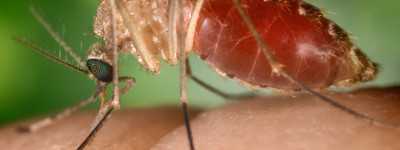West Nile Virus
The most common way the West Nile virus is transmitted to workers is by the bite of a mosquito. Most people infected with West Nile virus will not have any symptoms. About 1 in 5 people who are infected will develop a fever and other symptoms. Less than 1% of those infected develop a serious, sometimes fatal, neurologic illness.
Employers should provide workers with training about West Nile virus prevention and symptoms of infection, and provide EPA-registered insect repellent and protective clothing. Workers can prevent mosquito bites by using insect repellent and wearing protective clothing that covers their skin.
Resources
-
 CDC West Nile Virus Information
CDC West Nile Virus Information
Comprehensive and updated information on the West Nile virus. -
 CDC Insect Repellent Use and Safety
CDC Insect Repellent Use and Safety
Answers to common questions about the safe use of repellents. -
 NIOSH Fast Facts: Protecting Yourself from Ticks and Mosquitoes
NIOSH Fast Facts: Protecting Yourself from Ticks and Mosquitoes
Print or order this free card for easy access to important safety information. -
 NIOSH Brochure: Recommendations for Protecting Outdoor Workers from West Nile Virus Exposure
NIOSH Brochure: Recommendations for Protecting Outdoor Workers from West Nile Virus Exposure
(En Español)
Answers to questions relevant to outdoor workers and recommendations for prevention. -
 NIOSH Brochure: Recommendations for Protecting Laboratory, Field, and Clinical Workers from West Nile Virus Exposure
NIOSH Brochure: Recommendations for Protecting Laboratory, Field, and Clinical Workers from West Nile Virus Exposure
(En Español)
Answers to questions for laboratory, field and clinical workers with recommendations for prevention. -
 OSHA West Nile Virus Fact Sheet
OSHA West Nile Virus Fact Sheet
Information designed to educate employers and workers about the virus and also offer ways to reduce the risks of infection. -
 New York State Fact Sheet for Outdoor Workers: West Nile Virus Information
New York State Fact Sheet for Outdoor Workers: West Nile Virus Information
Outlines simple steps you can take to reduce your risk of being bitten by mosquitoes to protect the general public and people who work outdoors.
- Page last reviewed: March 21, 2016
- Page last updated: March 22, 2016
- Content source:
- National Institute for Occupational Safety and Health Education and Information Division


 ShareCompartir
ShareCompartir
